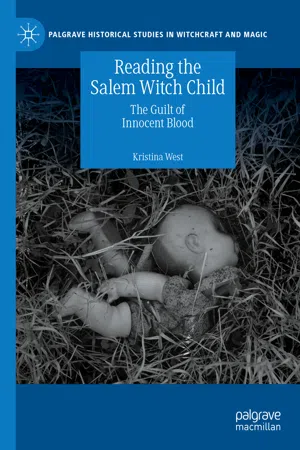However, while
Shakespeare may not have written his witches specifically as children (‘You should be women / And yet your beards forbid me to interpret / That you are so’, comments Banquo), there is a correlation between childhood and witchcraft across literature from fairy tales to twenty-first-century young adult (YA) literature.
4 As Lyndal
Roper comments:
The stories about witches, wands, mice, and demons [testified to be children in European witch trials], which people were starting to purchase for pleasure in the late seventeenth century, would in the end become part of a nineteenth-century canon of folklore and fairy tale to be purveyed to children, and they still hold their place in children’s fiction today.5
As such, what
Roper reads as the imagination of children that populated their real-life
accusations of witchcraft with familiar
s and witches has informed much later
fiction and formed a new correlation between witchcraft and childhood
in fiction . In fairy tales, the child is often constructed as the innocent victim of the elderly, crone-like, evil witch: think
Snow White ,
Hansel and Gretel , and more recently
The Wizard of Oz . Yet even in modern,
Disney-led retellings of tales rooted in a much grimmer tradition, in which the unassailable
innocence of the child lends itself more to post-
Romantic than early modern literary constructions of childhood (although I will trouble such categories throughout this work), these stories tell us that the children can, and do, win. Dorothy drops a house on one witch and melts another, even as the constructions of witches
as evil are troubled by the presence of a helpful ‘good witch’ and Dorothy’s identification by Marion
Gibson as a ‘witch-like heroine’.
6 After being tempted in by their greed for candy and cake,
Hansel and Gretel manage to bundle their witch into her own oven.
7 And
Disney’s
Snow White witch-queen dies through her own misdeeds, a victim of her evil against the snow-white
innocence of the child (despite that child’s subsequent move into an ostensibly adult
sexuality through an unsought kiss while unconscious from a man in a position of power, one that would never pass muster in the days of #MeToo). Storybook children triumph over their witches, denounce them, and frequently kill them; but here, the seemingly unassailable line between the guilt of the malefactor-witch and the
innocence of the child victim becomes somewhat hazy. Is this the triumph of good over evil or, in frequently becoming the killer, is the child morphing into the
witch in its turn, moving out of its socially approved hierarchical place (as the frequently female literary witch so often does too) to achieve its own ends and exert its own power, while the witch takes the child’s place as victim?
The relationship of childhood and witchcraft across history is no less complex than that of literature. Children are most frequently positioned as passive victims of witchcraft in historical accounts, targeted in their cots or even before birth either to avenge some alleged or imagined slight from mother to witch or to gain power over the new mother, with the child’s loss to its family figured as both emotional and economic. The infamous 1487 witch-hunting treatise, the Malleus Maleficarum...
